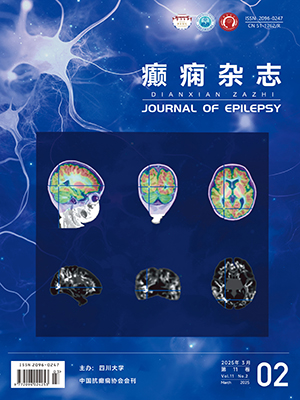| 1. |
Jenssen S, Gracely EJ, Sperling MR. How long do most seizures last? A systematic comparison of seizures recorded in the epilepsy monitoring unit. Epilepsia, 2006, 47(9):1499-1503.
|
| 2. |
Chen JWY, Wasterlain CG. Status epilepticus:pathophysiology and management in adults. The Lancet Neurology, 2006, 5(3):246-256.
|
| 3. |
Lowenstein DH, Bleck T, Macdonald RL. It's time to revise the definition of status epilepticus. Epilepsia, 1999, 40(1):120-122.
|
| 4. |
Foreman B, Hirsch LJ. Epilepsy emergencies:diagnosis and management. Neurol Clin, 2012, 30(1):11-41.
|
| 5. |
Brophy GM, Bell R, Claassen J, et al. Guidelines for the evaluation and management of status epilepticus. Neurocrit Care, 2012, 17(1):3-23.
|
| 6. |
Sutter R, Kaplan PW, Ruegg S. Outcome predictors for status epilepticus——what really counts. Nat Rev Neurol, 2013, 9(9):525-534.
|
| 7. |
A RAOLGMT. Status Epilepticus Severity Score (STESS)_a tool to orient early treatment strategy. J Neurol, 2008, 255(10):1561-1566.
|
| 8. |
Dham BS, Hunter K, Rincon F. The epidemiology of status epilepticus in the United States. Neurocrit Care, 2014, 20(3):476-483.
|
| 9. |
Rudin D, Grize L, Schindler C, et al. High prevalence of nonconvulsive and subtle status epilepticus in an ICU of a tertiary care center:a three-year observational cohort study. Epilepsy Res, 2011, 96(1):140-150.
|
| 10. |
Rossetti AO, Logroscino G, Bromfield EB. A clinical score for prognosis of status epilepticus in adults. Neurology, 2006, 66(11):1736-1738.
|
| 11. |
Legriel S, Mourvillier B, Bele N, et al. Outcomes in 140 critically ill patients with status epilepticus. Intensive Care Med, 2008, 34(3):476-480.
|
| 12. |
Sutter R, Marsch S, Fuhr P, et al. Mortality and recovery from refractory status epilepticus in the intensive care unit:a 7-year observational study. Epilepsia, 2013, 54(3):502-511.
|
| 13. |
Bausell R, Svoronos A, Lennihan L, et al. Recovery after severe refractory status epilepticus and 4 months of coma. Neurology, 2011, 77(15):1494-1495.
|
| 14. |
Fernandez-Torre JL, Kaplan PW, Rebollo M, et al. Ambulatory non-convulsive status epilepticus evolving into a malignant form. Epileptic Disord, 2012, 14(1):41-50.
|
| 15. |
Koubeissi M, Alshekhlee A. In-hospital mortality of generalized convulsive status epilepticus:a large US sample. Neurology, 2007, 69(9):886-893.
|
| 16. |
Sutter R, Tschudin-Sutter S, Grize L, et al. Associations between infections and clinical outcome parameters in status epilepticus:a retrospective 5-year cohort study. Epilepsia, 2012, 53(9):1489-1497.
|
| 17. |
Mayer SA, Claassen J, Lokin J, et al. Refractory status epilepticus:frequency, risk factors, and impact on outcome. Arch Neurol, 2002, 59(2):205-210.
|
| 18. |
Sutter R, Grize L, Fuhr P, et al. Acute-phase proteins and mortality in status epilepticus:a 5-year observational cohort study. Crit Care Med, 2013, 41(6):1526-1533.
|
| 19. |
Sutter R, Kaplan PW, Marsch S, et al. Early predictors of refractory status epilepticus:an international two-center study. Eur J Neurol, 2014,doi:10.1 111/ene. 12531.
|
| 20. |
Sutter R, Kaplan PW, Ruegg S. Independent external validation of the status epilepticus severity score. Crit Care Med, 2013, 41(12):475-479.
|




